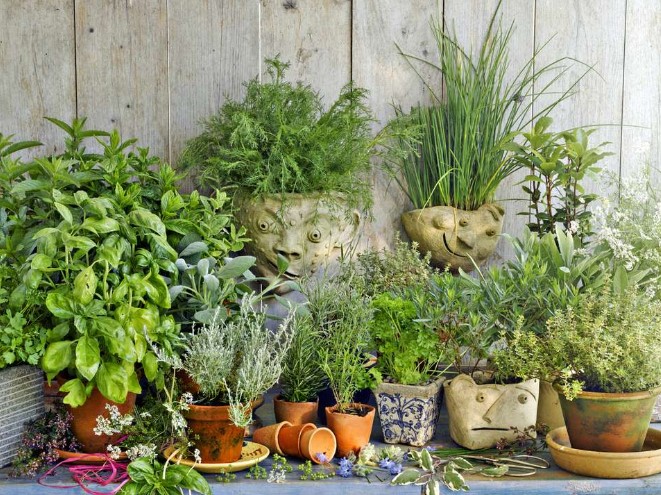You might consider growing an herb garden. But, you don’t know how, or your first try was a huge failure. There are a couple of things that you need to consider and know before you can successfully grow your herb garden.
Some of the herbs are really easy to grow, while other herbs are delicate and need special care. This is why you need to make sure that you are getting as much information about growing your own herb garden as possible. With this guide, you will not go wrong.
SELECTING THE RIGHT PLACE FOR GROWING YOUR HERB GARDEN
This is the first thing to consider. Where you are going to grow your herb garden. Are you going to grow your herbs in your kitchen, leaving it in pots? Or, are you going to plant it outside in a vegetable garden?
It doesn’t matter if this is in pots or in the vegetable garden, you need to remember that it needs to have enough sunlight and water. Some herbs need more sunlight than other and more water. Look around and find a spot that will be perfect for your herbs. No matter if this is inside or outside.
CHOOSING THE HERBS TO GROW
Now, you can consider what herbs you want to grow. If you are new to growing herbs or plants, then you should make sure that you don’t try to grow the herbs that are delicate and that needs special care. These herbs are dying easily if you don’t care for it correctly.
Luckily most of the herbs are growing easily without any problems. You don’t need to worry about special care, as long as they have enough sunlight, water, and the right soil, these herbs will grow.
PREPARING THE SOIL
When you are going to plant your herbs in the garden, you will need to make sure that you prepare the soil first. Adding feedings and fertilizer before you start planting your herbs. This is essential. Any plants, including herbs and vegetables, need special feedings and fertilizers to grow successfully.
When you are growing your herbs indoors in pots, you will need to have high-quality potting soil. The only way that you can be sure to have herbs that will grow in pots, inside. You should never use garden soil in pots. This isn’t healthy for herbs. You can find high-quality potting soil at garden stores. Never purchase the cheaper soil, but invest in the higher quality that is more expensive.
WATERING THE HERBS
Most of the herbs want frequent water. Meaning that the soil should be moist all the time. However, some herbs need more water than other herbs. And, you need to plan your garden that you don’t give the same amount of water to all the herbs.
It is much easier to water herbs in pots. Then, you can keep the soil moist of the herbs that need moist soil. And, to those herbs that don’t want frequent water, you can give less water. Making it easier to have different types of herbs growing successfully. It’s also a good idea to keep labels on the pots to ensure that you remember which herbs need more water than other herbs.
For some growing a herb garden is easier than for others. This is just because they have more experience and know what to do to keep the herbs growing successfully. But this doesn’t mean that just because you don’t know how to grow herbs, that you should not consider starting your own herb garden. You just need some guidance to get started. And, this is what this guide is all about. To make sure that you are able to grow your herbs successfully and to have an herb garden with a huge variety of herbs to choose from.










